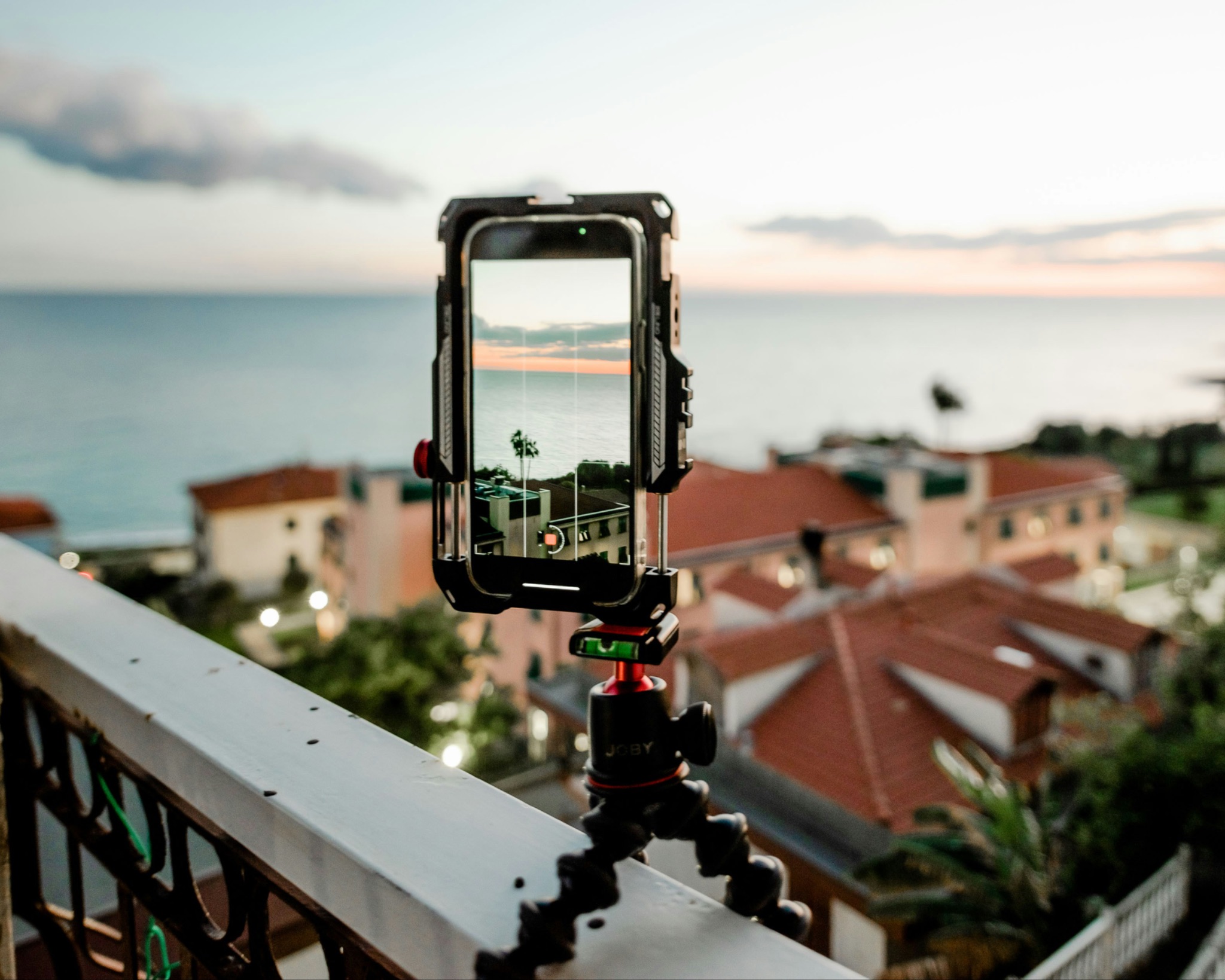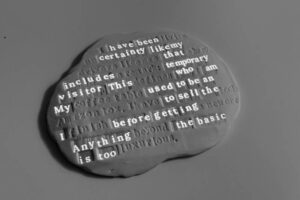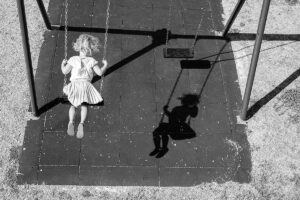Getting to eye level with wildlife subjects can be a bit of a challenge. Here’s one way to get down. I use a black flying disc to mount my camera on a gimbal. Beats trying to move a tripod along the ground by a mile. Read on to see my set up and reasoning below.
Why go low for wildlife photos?
When photographing wildlife, especially birds, the less you are noticed the better the capture of behavior. This brings me to a different way to mount your gimbal. Setting it up on a flying disc allows you to lay on the ground which makes you almost invisible to your avian friends. Meanwhile, many tripods will enable you to get your camera low to the ground. The multiple legs also make it difficult to change your position. The flying disc mount slides along the ground with no friction. Laying on the ground gives you the lowest profile possible. The sliding option enables you to move closer to your subject relatively undetected.
 Flying disc with Platypod eXtreme, three inch extension from Handle with gimbal. Any gimbal can work. Remove the gimbal from your regular tripod and swap back and forth.
Flying disc with Platypod eXtreme, three inch extension from Handle with gimbal. Any gimbal can work. Remove the gimbal from your regular tripod and swap back and forth.Flying disc
First bit needed is the disc. I use a 10.75 inch model that’s 175 grams. This is stiff and durable enough for the use. There are less expensive flying discs, but you need more stiffness than they supply.
 Parts: Disc, with three 1/4 20 x 1 inch bolts, I used stainless steel button head socket cap bolts with caps to prevent rust. Platypod eXtreme, Platypod spigot with 1/4 to 3/8ths reducer. Macro slider added when using very heavy lens to easily change position when the lens weight shift with extension. Gimbal.
Parts: Disc, with three 1/4 20 x 1 inch bolts, I used stainless steel button head socket cap bolts with caps to prevent rust. Platypod eXtreme, Platypod spigot with 1/4 to 3/8ths reducer. Macro slider added when using very heavy lens to easily change position when the lens weight shift with extension. Gimbal.Putting it together
Having a Platypod Handle gives you two options. You can use the smaller three inch section to get the gimbal high enough to not get caught on the edge of the disc. The easiest way to assemble is to mount the eXtreme on the Frisbee as outlined below. With a Platypod Handle, you have the option of using the three inch extension to allow clearance for the gimbal to rotate. This will be the lowest that the camera can be to the ground. For me that’s just a bit of a struggle to get that low. I find the Handle at full size to be just about perfect when resting on my elbows. Try both configurations to find the one that works best for you.
Here are parts you can use if you don’t have a Platypod Handle. Frisbee, Platypod eXtreme, Platypod spigot adaptor with 3/8 to 1/4 inch reducer, three 1/4X20 stainless steel rounded hex head bolts with rounded caps and a gimbal. Optional: Focusing rail if you have a heavy long lens that extends a fair distance.
Mount the Platypod eXtreme
You’ll need a drill with a 1/4 inch bit and a hex head wrench.
Mark two back holes and one front middle hole and drill 1/4 inch holes. Place the eXtreme over the drilled holes and feed the 1/4 inch stainless bolts through the Frisbee and thread until tight. Add the stainless caps to protect it from getting scratched. Add the spigot adaptor with reducer. Mount the gimbal. Mount your camera. With a super long lens that extends to throw off the balance you might want to add a macro focusing rail to make it easier to balance the camera and lens.
Not only does using the flying disc gimbal mount setup allow you to move closer to your target you achieve a more intimate view when photographing wildlife from eye level.
Sourcing materials
All of the Platypod mentioned parts can be found through B&H. Flying disc I got through Amazon. Stainless steel button head socket cap bolts with caps were at my local hardware store. If you don’t already have a gimbal head there are choices here.
Yours in Creative Photography,
Bob
Tell your story with the second annual Visual Storytelling Conference!
Experience four days of interactive, online training sessions featuring a range of educational content with experienced photographers and content creators. This free event kicks off with a series of technical boot camps to build essential skills, followed by live, online sessions on photography, video, business and social media. Join live from March 10-13, 2022!
- Posted on November 4, 2024
By shopping with our partners and affiliates, you help keep content on Photofocus free. Click here to learn more.
Bob is a lens-based artist and has had the honor and privilege to author books and articles on photography and has presented seminars and programs from Hawaii to the Caribbean. As a former Panasonic Lumix Ambassador, he has been able to stay up with the latest technology in the micro four-thirds cameras and now uses OM System cameras. Coates is a successful commercial and fine art photographer and photo educator based in Sedona, AZ with his wonderful wife who makes it possible for him to do all he does in the photography industry. Join Bob in Sedona, Arizona, a Dark Sky Community for Milky Way and Night Sky Photography Workshops. Need a speaker in your area? Get in touch.
Thanks to our partners who make Photofocus possible
Radiant Photo – Radiant Photo superior quality finished photos with perfect color rendition, delivered in record time. Your photos — simply RADIANT. The way they are meant to be.
Mylio Photos – Access your photos from anywhere, without the cloud! Easily showcase your photos on-the-go, resolve duplicates, find faces and look for those stunning locations.
B&H – B&H is a world renowned supplier of all the gear photographers, videographers, and cinematographers need and want to create their very best work.
MPB – Grab used but perfectly working cameras and lenses for less, or turn your old gear into cash by trading and selling them on MPB!

 2 weeks ago
5
2 weeks ago
5












 English (US) ·
English (US) ·
Inline Feedbacks
View all comments
Interesting method for getting low to the ground. What length/size lens have you used this with? I am wondering if it will handle a D850 with a 200-500mm Nikkor lens.
HI Andy, The lens shown, with the camera, is almost seven pounds total. It is not internal focus which is why I added the focus rail as the center weight shifts. It looks like that is close to the same weight as your combo. Hope this helps and happy imaging! Yours in Creative Photography, Bob